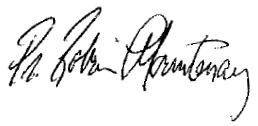Sermon
Darkness and Light
During the Sundays in Lent, the Gospel readings have shifted from Matthew to John. Each of the Johannine reading is long – most of them nearly a full chapter. Each is a well-developed story in its own right, a sign in the book of signs, each revealing something more about Jesus’ true identity. A recurring theme in John’s gospel is the contrast between darkness and light. We find it first in the gospel’s prologue. There we learn that, what has come into being through the preexistent Word of God “was life, and the life was the light of the world.” John the Baptist bore witness to the light, but he himself was not the light. “The true light, which enlightens everyone, was coming into the world.” The theme emerges again in chapter 3, where Nicodemus, a Pharisee, comes to Jesus by night (in the dark). Jesus reveals that the light has come into the world, but the world prefers darkness to light.
In chapter 8 Jesus clearly states, “I am the light of the world.” This identity is affirmed when in chapter 9 Jesus heals a man born blind, thereby leading him from darkness into light. The penultimate sign in John’s book of signs is the raising of Lazarus from the dead. Death is the ultimate darkness, and Jesus even exercises power over it. Despite this triumph, the darkness returns in chapter 13 when Judas leaves the company of disciples to betray Jesus. John sets the stage for Judas’s treason by saying, “And it was night.”
Darkness casts its shroud over Jesus’ trial, crucifixion, and burial. Even on Easter morning, Mary Magdalene approaches the tomb very early, “while it was still dark.” Although she sees that the stone has been rolled away and the tomb is empty, darkness continues to obscure this surprising development. When Mary tells the disciples of her discovery, Peter and the beloved disciple run to the tomb. Though the unnamed disciple “saw and believed,” John tells us that, “as yet they did not understand the scripture, that he must rise from the dead.” The darkness remains.
It’s only in the light of day that the risen Jesus appears. Though he engages Mary in conversation, she initially mistakes him for the gardener. When Jesus calls her by name, however, the light overcomes the darkness, and she recognizes that he has risen and stands before her.
The conflict of darkness and light play out in Holy Week and Easter, and, of course, the light emerges victorious. We follow Jesus from his triumphal entry into Jerusalem, through the last supper with his disciple, his betrayal, and trial, his death and burial, to his glorious resurrection. Let God overcome the darkness in your lives this Holy Week and Easter: join us for worship!
In Jesus’ name,

Pastor Robert M. Mountenay
Site designed and developed by The SPI Group.
